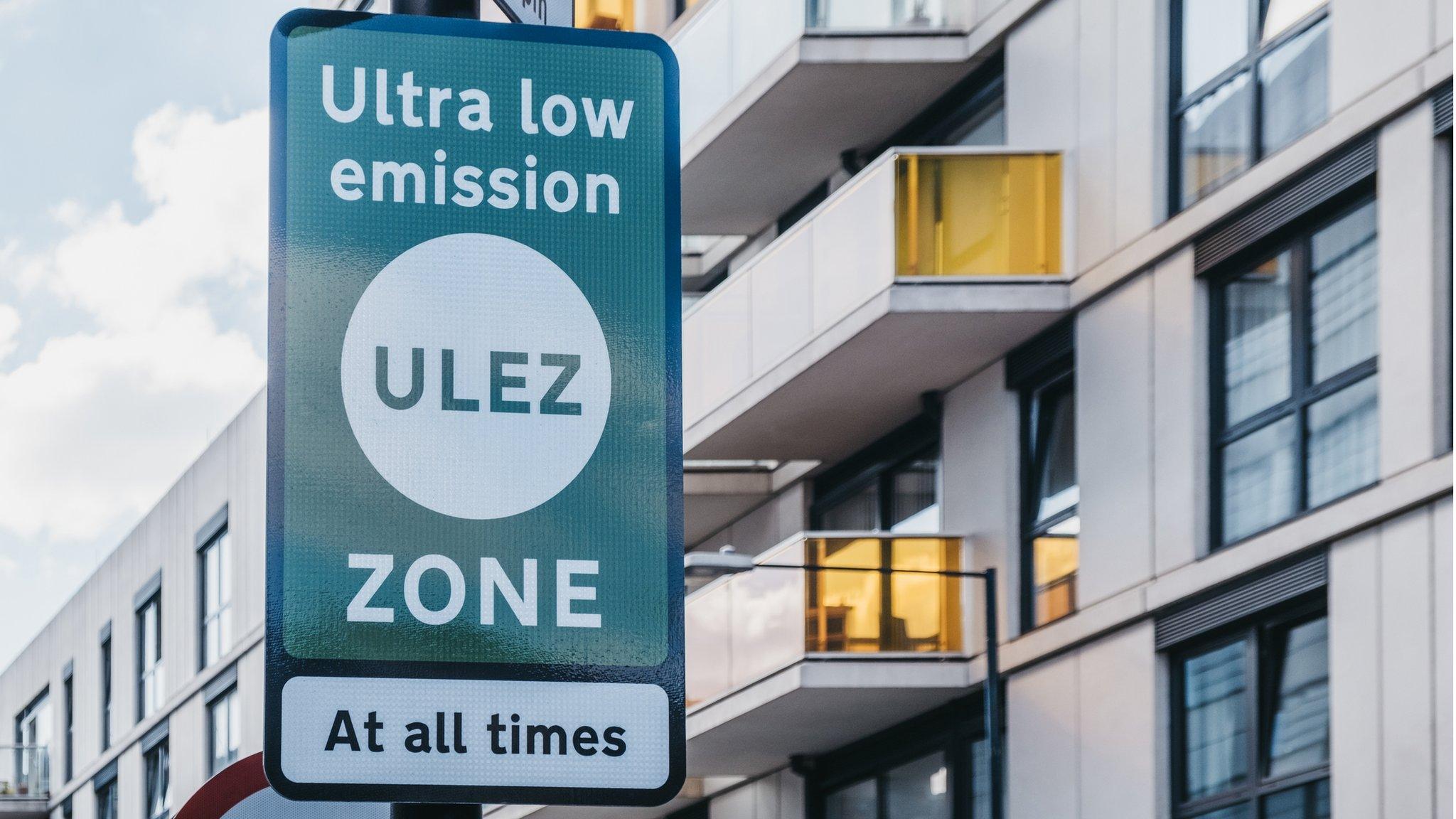London ULEZ: Emissions cut in central London by 46% - City Hall data
- Published
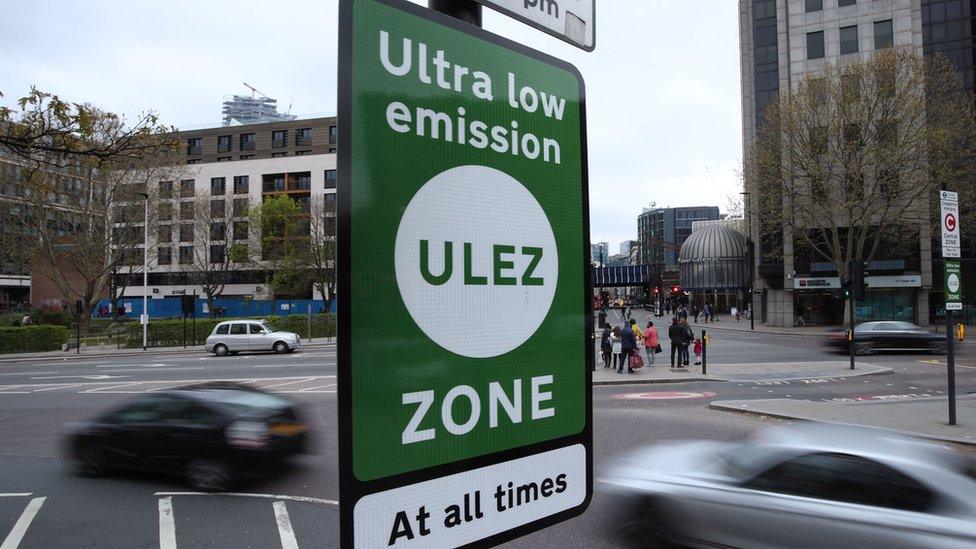
The Ultra Low Emission Zone (ULEZ) is set to cover outer London from 29 August
The capital's Ultra Low Emission Zone (ULEZ) saw harmful pollution decrease in central and inner London, according to a new City Hall report.
Levels reduced by 46% compared to what they would have been without ULEZ in central London and by 21% in the wider inner London zone, the data found.
Mayor Sadiq Khan wants to extend it across all of London from August.
But his clean-air policy has been met with opposition from a number of councils in the planned extension zone.
ULEZ aims to cut pollution levels across London by charging drivers of vehicles that do not meet minimum emissions standards £12.50 a day.
Currently, drivers are only charged to enter the area within London's North and South-Circular roads.
The report,, external which was carried out by City Hall and independently peer reviewed by Dr Gary Fuller at Imperial College London, looked at the levels of nitrogen oxides (NOx) emissions in each area.
It also found:
There were 74,000 fewer polluting vehicles driving in the zone each day, a cut of 60% since its expansion in October 2021
There were nearly 50,000 fewer vehicles seen in the zone on an average day - a reduction of almost 5% compared to the month prior to the expansion
The expansion of ULEZ saw NOx emissions reduced by 23% (13,500 tonnes) across London cumulatively since 2019 compared with what they would have been
Boundary roads have seen a reduction in nitrogen dioxide (NO2) concentrations of between 19% and 27% compared to without the ULEZ
Mr Khan said: "The evidence from this landmark report is clear - the ULEZ works. This is beyond dispute."
He added: "As mayor, I simply won't accept that the five million people in outer London shouldn't be able to benefit from the same life-saving health impacts that ULEZ has already brought to the rest of our city.
"Everyone has the right to breathe clean air."
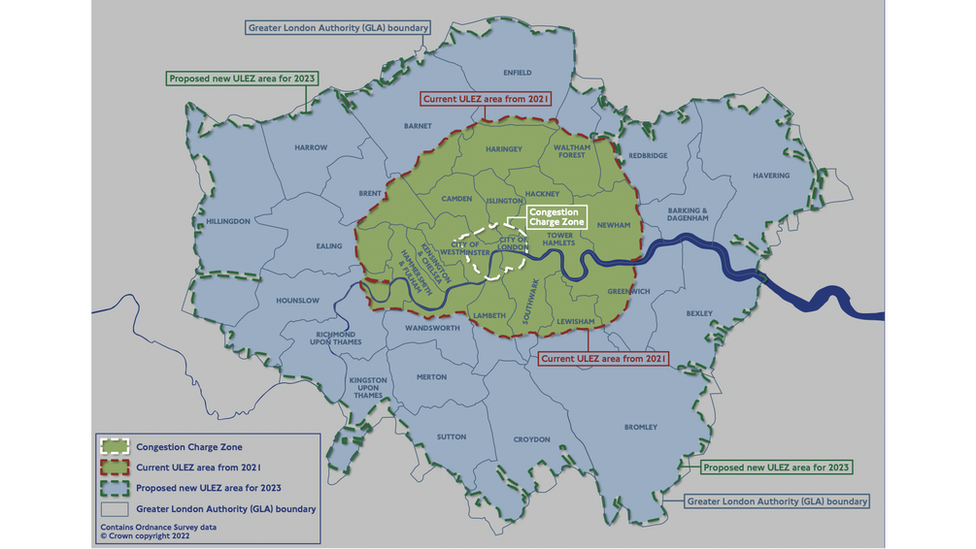
Poor public transport links in the outer London boroughs have been cited as a cause for concern by some councils
City Hall said all of London still exceeded the World Health Organization's guidelines for air quality, and more than half of deaths attributable to air pollution were in outer London.
It added about 4,000 Londoners died prematurely each year due to toxic air.
Eleven outer London councils have expressed concerns over its expansion, with many asking the mayor to delay or improve the scrappage scheme to support people during the cost-of-living crisis.
In an open letter to the mayor, Bexley, Bromley, Harrow and Hillingdon said their boroughs "enjoy good air quality" with levels of harmful gases "considerably below the levels in inner and central London".
Some councils bordering London also have objections, with some refusing to allow warning signs and cameras to be placed on their land.

Analysis
BBC London's transport correspondent Tom Edwards
This isn't really what it seems; it's not really about the ULEZ as it is at the moment, covering the area within the north and south circular, it's all about the planned expansion.
That has received heavy flak from many businesses, councils in outer London and the Home Counties.
They say the cost of £12.50 a day is too much for the 200,000 non-compliant vehicles that will have to pay, especially during a cost-of-living crisis. They also claim the ULEZ will make only marginal improvements to air quality in outer London.
What the mayor is doing here is fighting back and using the data to show ULEZ does improve air quality.
He is trying to frame the argument that this is a health issue above all else.
Will this data change his political opponents minds? No. But it does draw up the battle lines very clearly.

Follow BBC London on Facebook, external, Twitter , externaland Instagram, external. Send your story ideas to hellobbclondon@bbc.co.uk, external
- Published9 February 2023
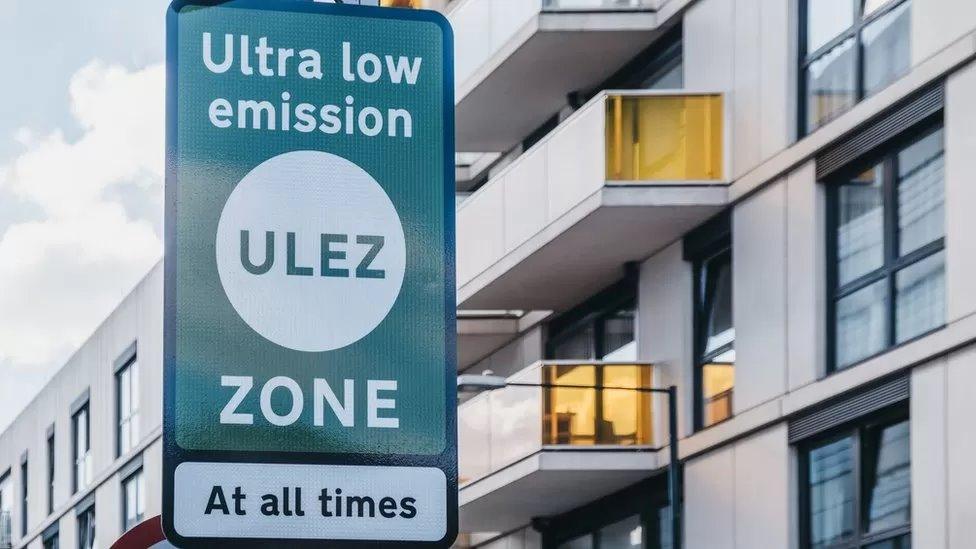
- Published2 February 2023
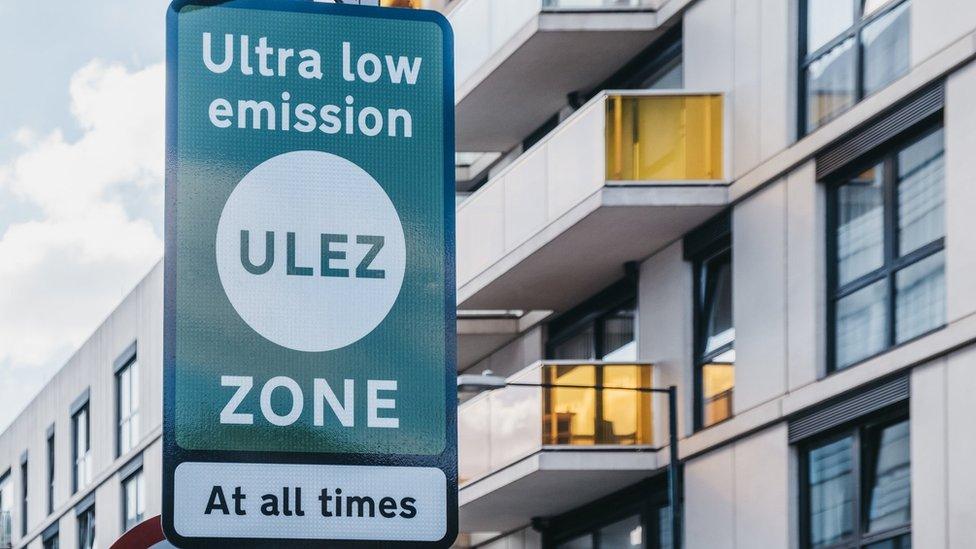
- Published1 February 2023
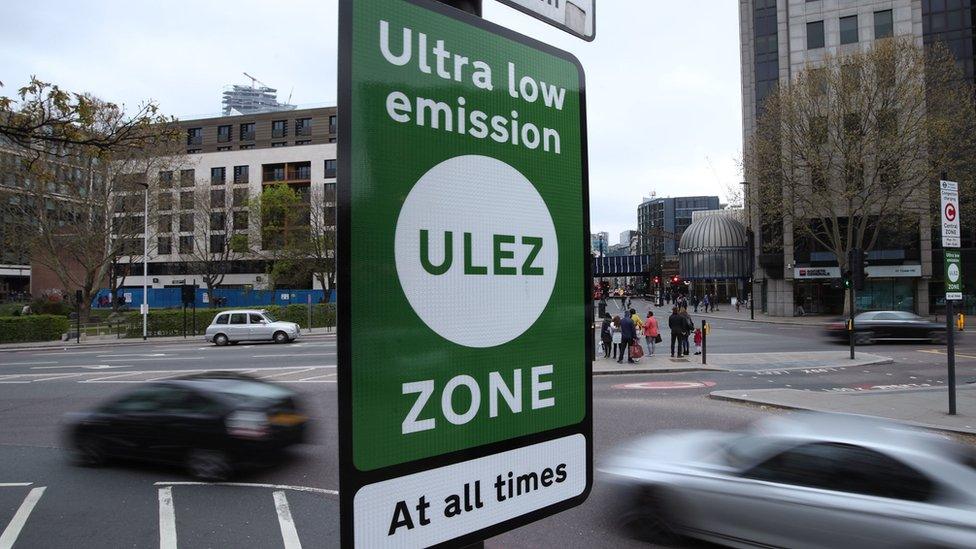
- Published30 January 2023
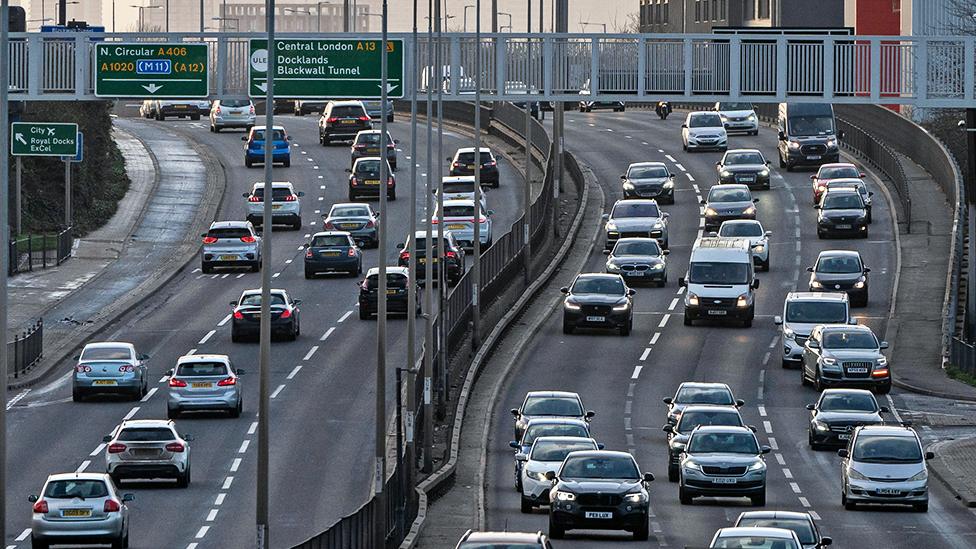
- Published29 January 2023
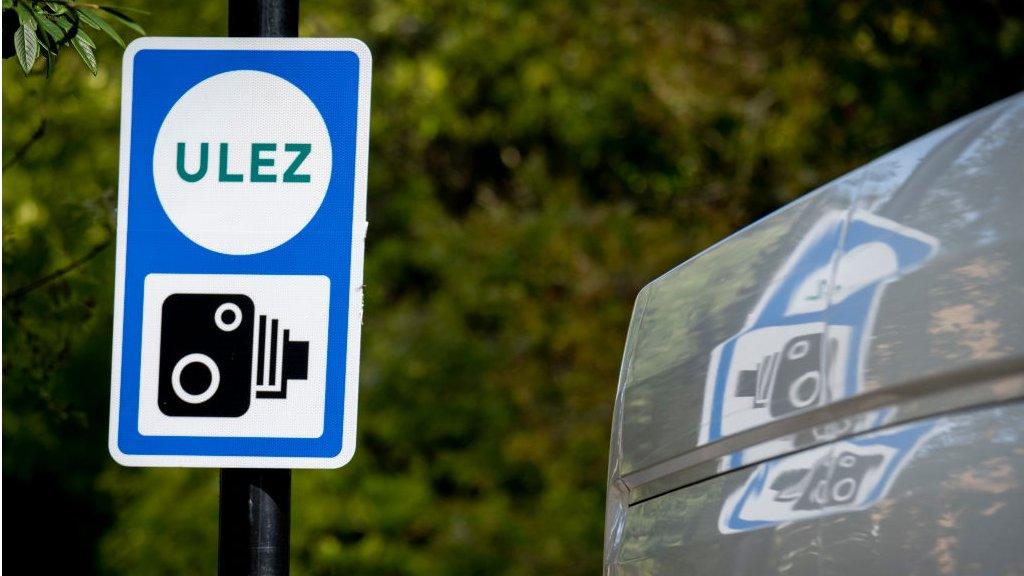
- Published26 January 2023
